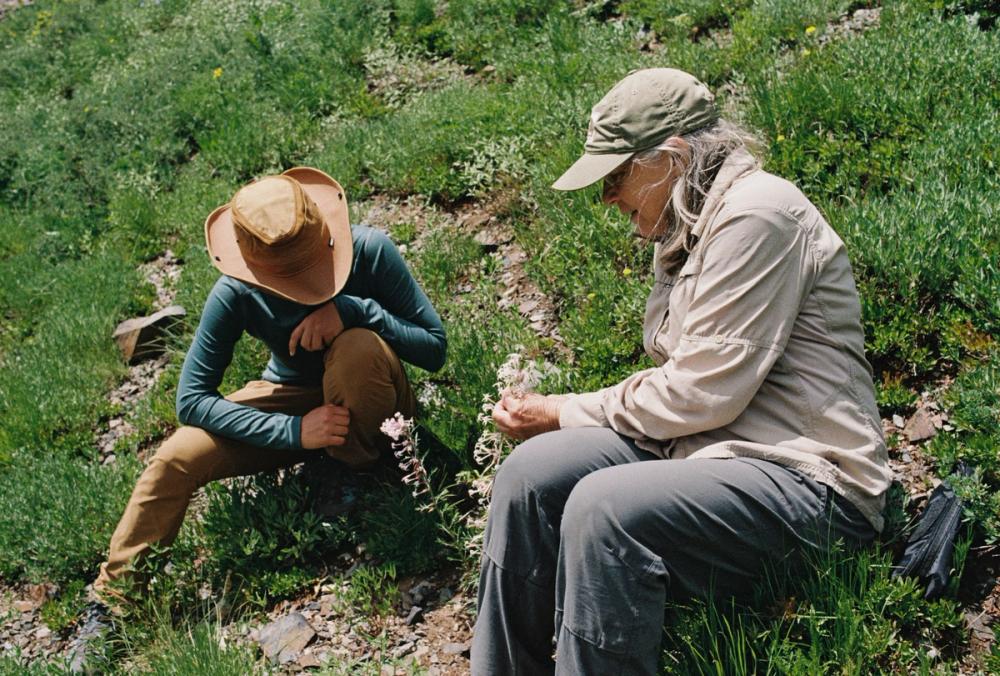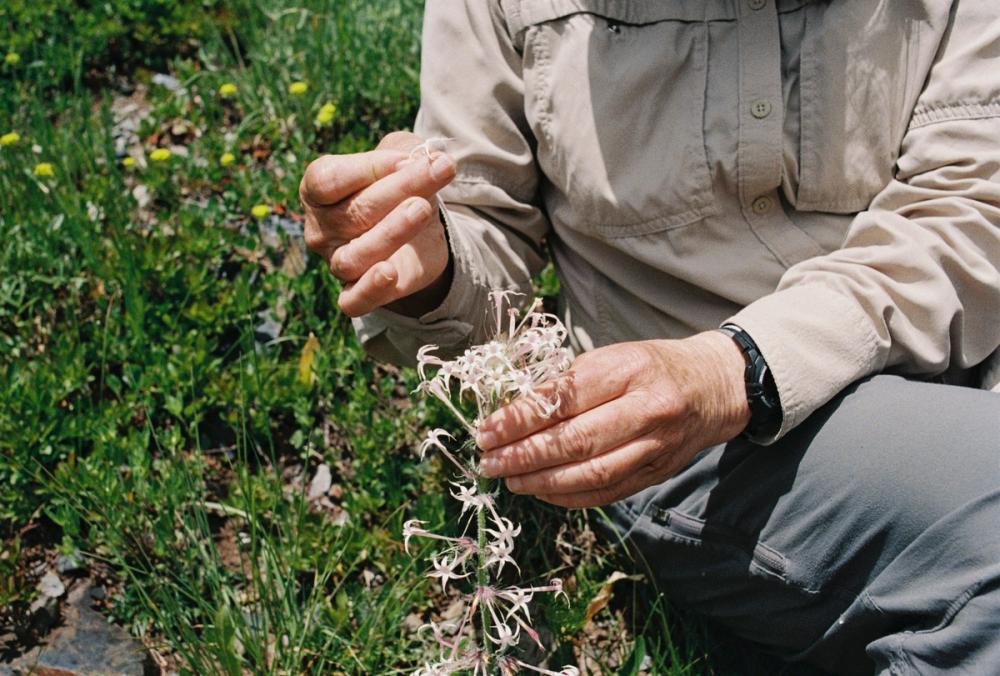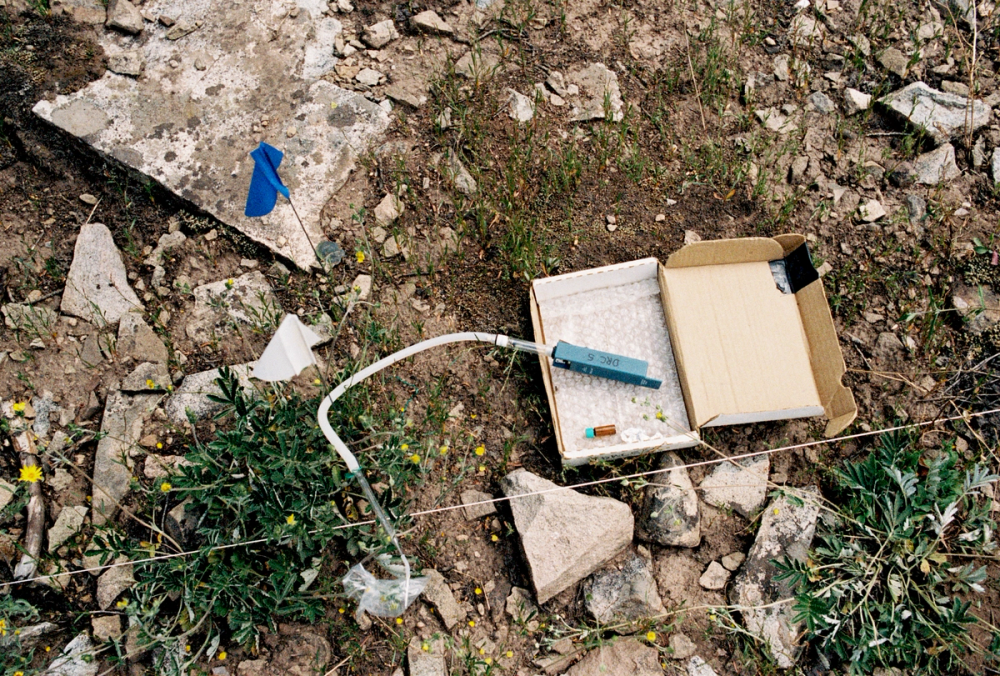As the world around us changes, we often perceive these shifts through our primary senses: sight and sound. However, much of nature’s transformation is subtle, or invisible, occurring beyond the reach of our immediate perception. Experts including professors Kathryn Yusoff and Anna Lowenhaupt Tsing have both highlighted the need for new ways to notice and understand these beyond-human worlds. Tsing, for example, draws to attention the concept of ‘tools for noticing’, which can translate into advocacy for exploring how design can help us connect with and assign value to aspects of nature we can’t normally sense, making them actionable in the name of environmental stewardship.

Scent is an often overlooked sense in environmental discourse, yet we are becoming increasingly aware of the critical role it plays in determining how species communicate, adapt, and survive. With this in mind, between 2024-25 I developed a project with the Design Museums, Future Observatory Design Researchers in Residence programme, Olfactive Evolution, which responds to this gap in perception by focusing on how climate change alters the aromatic signals of plants and, consequently, their ecological relationships. Framed within a broader understanding of nature as a continuum that includes humans and human actions, this project rejects the artificial divide between 'natural' and 'human-made' worlds. Instead, it considers how we might re-attune ourselves, through observation, design, research and scientific collaboration, to sense and respond to environmental signals that are usually beyond our grasp. By engaging with scent as a form of evolutionary language, the project invites us to imagine new ways of relating to the living systems we are already part of.
In 1966, botanists Calaway H. Dodson and Harold G. Hills used gas chromatography and mass spectrometry (GC-MS) to analyse plant scents. Their work revealed that plants, even those that appeared scentless to humans, were emitting a range of volatile organic compounds (VOCs) that could be detected by pollinators. Together these substances are responsible for creating a plant’s unique scent, and so play a critical role in maintaining their relationship with pollinators like bees, moths, and other creatures that aid in reproduction through their own hunt for nectar. Each plant species produces a unique combination of VOCs which may be tailored to attract specific species of pollinators, but also detract unwanted visitors.
The relationship between plant scent and evolution is an emerging focus of climate-related research. We are now learning that excessive heat, pollution, and water scarcity can alter how plants produce these compounds, impacting plant-pollinator interactions. These transformations tend to be imperceptible, often unfolding in remote places, over long time scales, involving quantities of VOC’s too delicate for us to discern, with consequences for reproduction, hybridisation, and evolution more broadly. They alter an ecological balance beyond our perception, with huge consequences for a vast web of species that rely on healthy plant-pollinator interactions, including ourselves. As conditions change, the ability of plants and their pollinators’ to adapt (and indeed some have shown they can) will determine whether they thrive or face extinction. Attempting to understand and relate to these hidden challenges is crucial for our plans for the future.

Design, with a user friendly focus and communication at its core, offers a framework and potential means of making the unseen visible, and actionable. The role of the designer is not only to create and communicate, but to connect knowledge and translate it across disciplines. Through collaboration with scientists to create tools and experiences that reveal invisible ecosystemic relationships, design can foster a deeper connection with the natural world, enable more informed decisions, and mitigate negative outcomes.
As Donna Haraway suggests, ‘It matters which stories make worlds, which worlds make stories.’ Through design, we can craft stories that shape a future where human and more-than-human life can thrive. To develop the Olfactive Evolution project, I’ve been collaborating with scientists based at 2,900 meters up in the Rocky Mountains of Colorado, who are using climate-focussed simulations to try and predict the future of plant evolution and adaptation. Whilst working with artists, we took the flower data produced from these climate simulations and put them into animated simulations, with the aim of visualising the changes experienced by the Ipomopsis aggregata x tenuituba hybrid as it reacts to environmental shifts over the next 100 years.

Variations on plant scent have been observed in professions such as perfumery for generations. Altering the climate in which a plant grows has been a key technique when it comes to producing desired qualities, and the molecules that underpin them. For instance, David Bridger of Parterre Fragrances highlights how the scent of plants like Vetiver and Pelargonium (geranium) is influenced by environmental factors such as location, harvest time, and climate. However, as climate change accelerates, the ability to preserve or adapt these scents while maintaining their cultural and economic value is becoming increasingly difficult.
Another poignant example is the Damascus Rose (Rosa Damascena), grown in Bulgaria’s Rose Valley. Rising temperatures and reduced humidity are altering the rose’s scent, affecting both its market value and cultural significance. Despite the potential to develop new varieties, the cultural attachment to this traditional rose remains strong, leading to a pushback in uptake of the new. This raises questions about cultural diversity and the future of crop resilience in a changing climate. The challenge lies not only in the cultural desire to preserve scents (as well as foods and flavours), but also in the need to adapt to new environmental realities more broadly.
Hybridisation plays a key role in plant evolution and adaptation, just as it has played an important role in the evolution of our crops. Hybridisation is the process whereby two individuals from different species, mate and successfully produce offspring. These hybrids will have characteristics from both parent species creating a new mix, e.g. a white and red flower might create a hybrid in varying shades of pink. Many hybrids are sterile, however fertile hybrids do occur, and these can continue to reproduce and even hybridise back with one of its parent species. A fertile hybrid may eventually become a new species all of its own.
Human-directed hybridisation has been used for thousands of years to selectively introduce desirable characteristics, such as scent, aesthetic, taste, or yield, into cultivated plants, dramatically shaping evolution. Crops we cultivate, like tomatoes and roses, have been selected for traits such as consistency in taste and smell, prioritising predictability over biodiversity. As Anna Tsing points out, this focus on uniformity often leads to ‘ecological simplifications,’ which also reduce the complexity of ecosystems. Human-directed hybridisation has led in some cases to the weakening and isolation of certain species, bred to meet human preference and demand but lacking the wild resilience to adapt to climate pressures.
Wild hybridisation sees two species hybridise when they are visited by the same pollinator and pollen is transferred from a male or one species to a female of another (introduced by pollinator preference or wind patterns) can lead to the emergence of new traits that help species survive changing environments. Still, despite wild evolution generally being more responsive to environmental changes, even the wildest species are now under threat from the pace of climate change and human activity.
Protecting both cultivated and wild plants is essential for maintaining biodiversity. Wild relatives such as the Peruvian pimp tomato (Solanum pimpinellifolium), native to Ecuador and Peru, are vital for reintroducing genetic diversity back into crops. At the same time, the survival of diverse ecosystems is crucial for supporting wild relatives but also wild pollinators, which in turn are vital to sustaining our food systems and upholding strong plant-pollinator relationships.
An exciting and contemporary exploration of plant scent and evolution can be seen in the concept of ‘Post-varietal Communities’, a project by the artist duo Aterraterra, exploring how agricultural practices could embrace environmentally driven hybridisation processes, such those that arise from the interplay of insects, animals and wind, in response to environmental stress. This approach challenges the idea of fixed plant varieties determined by human preference and instead encourages dynamic evolution, with scent playing a crucial role in pollinator behaviour. This shift could foster more resilient plants capable of adapting to environmental changes.
In 2024 we planted the first hybridising meadow titled Hybridising Scentscapes. A 7x5M plot at the Design Museum’s Dame Sylvia Crowe Garden in London. The planting scheme of this plot intends to investigate how climate change and pollution affect the scent of plants, focusing on species within the Brassicaceae family. By encouraging hybridisation between scent-altering and scent-stable plants in the face of pollution, heat and drought, the project explores the potential for developing more resilient species through pollinator preference. The plot, planted in June 2024, is being monitored over three years as part of the museum’s Growing Together initiative.
The intersection of climate change, plant scent, and pollinator interaction offers a rich area of research into ecological resilience. As plants respond to environmental stresses, their scents evolve, which in turn affects their relationships with pollinators. These shifts not only influence plant populations but also have profound implications for agriculture, biodiversity, and culture. By fostering interdisciplinary collaborations and leveraging design as a tool for ‘noticing’, we can begin to understand and act upon these invisible changes, putting energy towards the resilience of ecosystems and the survival of both human and nonhuman life in an uncertain future.
More Reads
Ecology
Existing in Kinship with Everything
Keep readingThe plant lives of Aotearoa (and the myriad meanings they embody) have long been threatened by Western colonists, facilitated by a belief that an ecosystem’s importance is defined by what it offers humans. Hana Pera Aoake describes a very different Māori worldview – one that emphasises the deep, non-linear interconnections between the people and their plant-relatives, and that continues to resist and flourish in the face of eco-cultural imperialism. Edited by Jackson Howarth.
By Hana Pera AoakeKeep readingEcology
Weeds and their Metaphors
Keep readingMetaphors are powerful, especially where the fight for climate justice – and justice more widely – is concerned. They focus our attention on their components; connecting, reframing – creating associations between these constituent parts and so transforming them – uplifting, illuminating, distorting and deprecating. 'Natural' metaphors can be particularly potent. In this short piece, Barney Pau explores the metaphorical potential of the weed, finding it rich with resilience and binary-defying multiplicity. Edited by Jackson Howarth.
By Barney PauKeep readingEcology
Landscape Literacy: rambling and climate action
Keep readingSince climate activism typically focusses on carbon emissions, the mirror crisis of our destruction of ecological systems is woefully underdiscussed in much of Western environmental discourse. After lockdown forced her to put her hiking boots on, Eleanor Salter reflects on her growing understanding of the politics of the outdoors.
By Eleanor SalterKeep reading- Read more
